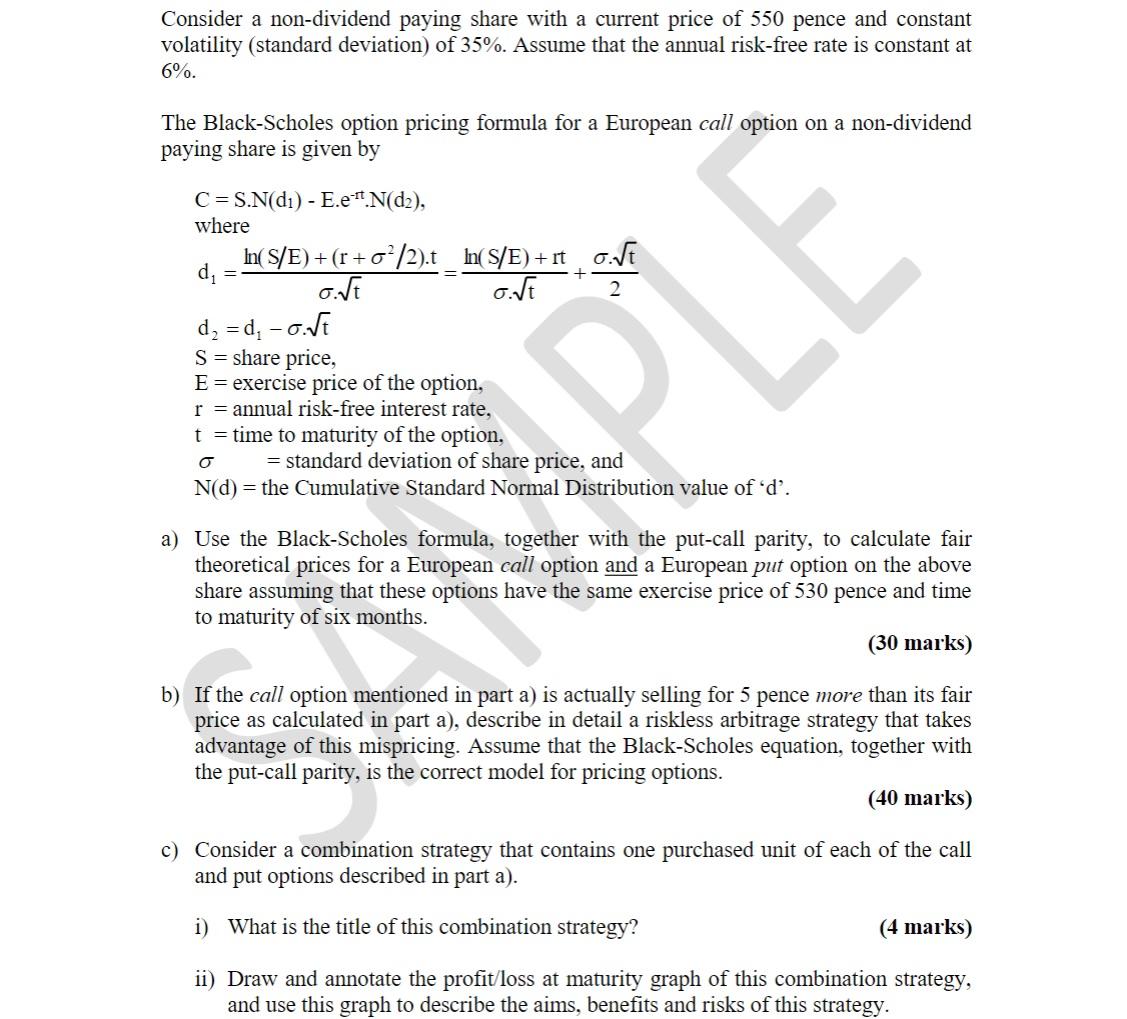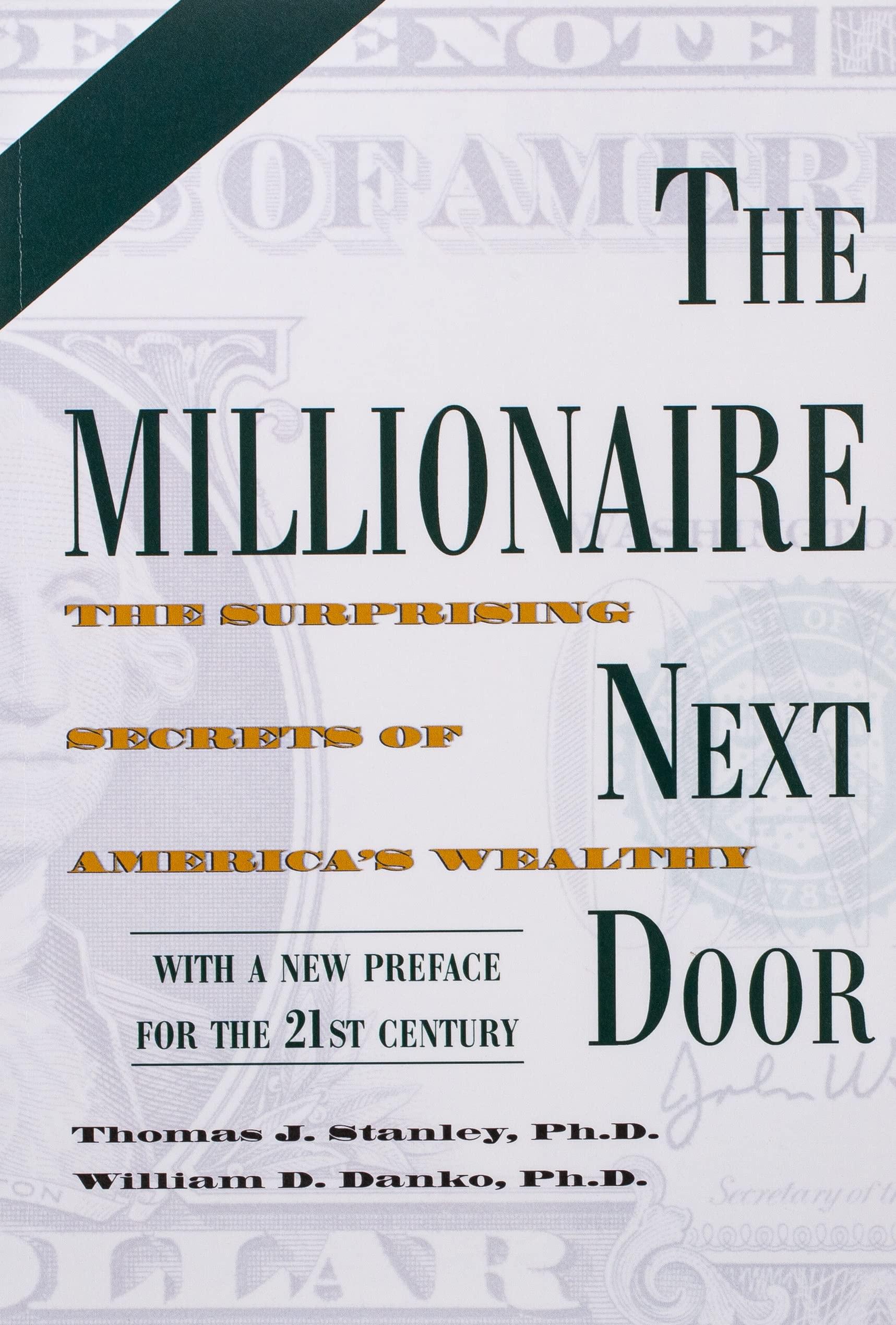
Consider a non-dividend paying share with a current price of 550 pence and constant volatility (standard deviation) of 35%. Assume that the annual risk-free rate is constant at 6%. The Black-Scholes option pricing formula for a European call option on a non-dividend paying share is given by C = S.N(d) - E.e-.N(d), where In(S/E) + (r+o/2).t_In(S/E) + rt d o.t d =d -0.t S = share price, E = exercise price of the option, r = annual risk-free interest rate, t = time to maturity of the option, = standard deviation of share price, and N(d) the Cumulative Standard Normal Distribution value of 'd'. a) Use the Black-Scholes formula, together with the put-call parity, to calculate fair theoretical prices for a European call option and a European put option on the above share assuming that these options have the same exercise price of 530 pence and time to maturity of six months. (30 marks) b) If the call option mentioned in part a) is actually selling for 5 pence more than its fair price as calculated in part a), describe in detail a riskless arbitrage strategy that takes advantage of this mispricing. Assume that the Black-Scholes equation, together with the put-call parity, is the correct model for pricing options. (40 marks) c) Consider a combination strategy that contains one purchased unit of each of the call and put options described in part a). i) What is the title of this combination strategy? (4 marks) ii) Draw and annotate the profit/loss at maturity graph of this combination strategy, and use this graph to describe the aims, benefits and risks of this strategy. PLE Consider a non-dividend paying share with a current price of 550 pence and constant volatility (standard deviation) of 35%. Assume that the annual risk-free rate is constant at 6%. The Black-Scholes option pricing formula for a European call option on a non-dividend paying share is given by C = S.N(d) - E.e-.N(d), where In(S/E) + (r+o/2).t_In(S/E) + rt d o.t d =d -0.t S = share price, E = exercise price of the option, r = annual risk-free interest rate, t = time to maturity of the option, = standard deviation of share price, and N(d) the Cumulative Standard Normal Distribution value of 'd'. a) Use the Black-Scholes formula, together with the put-call parity, to calculate fair theoretical prices for a European call option and a European put option on the above share assuming that these options have the same exercise price of 530 pence and time to maturity of six months. (30 marks) b) If the call option mentioned in part a) is actually selling for 5 pence more than its fair price as calculated in part a), describe in detail a riskless arbitrage strategy that takes advantage of this mispricing. Assume that the Black-Scholes equation, together with the put-call parity, is the correct model for pricing options. (40 marks) c) Consider a combination strategy that contains one purchased unit of each of the call and put options described in part a). i) What is the title of this combination strategy? (4 marks) ii) Draw and annotate the profit/loss at maturity graph of this combination strategy, and use this graph to describe the aims, benefits and risks of this strategy. PLE







